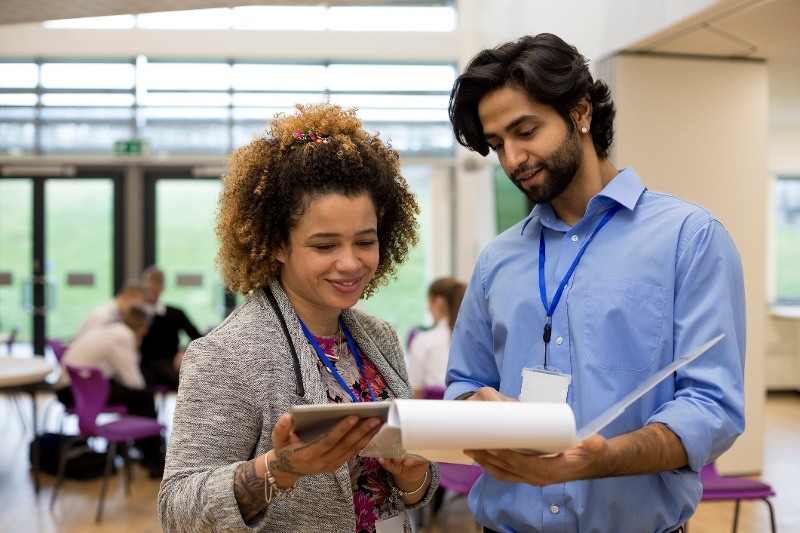Blog
Eight Actions to Build Strong Educator-to-Educator Relationships
From a mental health and loneliness epidemic to pitched battles over polarizing topics, such as Critical Race Theory, and the staggering impacts of gun violence and social media on adolescents, teachers are placed in the middle of compounding crises while also managing residual effects of a global pandemic. These crises are taking a toll. And teachers are leaving the profession at unprecedented rates.
What is the long-term solution to teacher burnout? Instead of piecing together makeshift policies, greater attention must be paid to sustainable retention strategies that prioritize teacher wellbeing. Cultivating positive educator-to-educator relationships –– across faculty, staff, and administrators –– may be a good place to start.
Prioritize Educator-to-Educator Relationships Within School Communities
Positive faculty and staff relationships are the bedrock of successful schools with high retention during tumultuous times. While existing research suggests strong relationships between educators lead to greater self-efficacy and job satisfaction, little research unpacks how school leaders foster these relationships.
In the spring of 2022, Search Institute began researching the mechanisms underlying positive educator-to-educator relationships. Through focus groups and interviews with 72 teachers, paraprofessionals, instructional coaches, and administrators employed in public, private, and charter schools across the nation, our team found the following actions can lay a foundation for educators to cultivate strong relationships with each other:
- Communicate a shared vision. Teachers unite when leaders articulate a clear schoolwide vision with core values. This summer, spend time with your instructional leadership team to craft a goal-oriented vision that you can introduce to faculty and staff in the fall, and revisit throughout the school year.
- Promote inclusive social opportunities. After experiencing the isolation of remote teaching, informal gatherings enable teachers to connect professionally and personally. Think strategically about when it might make the most sense to spend time as a school community based on your academic calendar. To ensure equitable participation, create a plan for child care, consider cultural inclusivity in terms of food and environment, and provide dietary options.
- Protect collaborative time. Schedules that enable frequent meetings elevate professional learning communities in ways that yield not only productivity but also relational bonds. If grade teams and/or departments do not have common prep times, brainstorm ways to remedy this so teachers have at least one time per week to plan together.
- Leverage physical space. Place educators in close proximity to spark relationships. Whenever possible, rearrange rooms to keep collaborators close.
- Challenge the impulse to take on new curricular initiatives. In an unprecedented moment of turnover, build buy-in by maintaining consistency as much as possible. A new school year often paves the way for new curricular initiatives. Before embarking on a new initiative, reflect on whether it is truly necessary for your school community.
- Be transparent. If changes are necessary, foster trust and a respectful environment by being explicit about decision-making. Before the school year begins, anticipate any major changes that may occur (e.g., new curricular initiatives; scheduling or personnel shifts) and map out when you want to announce changes and the rationales underlying said shifts.
- Show appreciation. Ensure teachers feel valued by acknowledging their efforts. During instructional walkthroughs, bring post-it notes with you and leave a quick compliment on each teacher’s door. Take photos of best practices and share them on a staff bulletin board. Create a monthly digital newsletter that celebrates teachers.
- Diversify faculty. A lack of diversity can feel isolating for educators from historically marginalized populations. Review your recruitment, hiring, and retention practices to ensure they are as inclusive as possible across intersectional identities. If openings emerge, promote positions with inclusivity and diversity top of mind. For example, share job openings with Historically Black Colleges and Universities (HBCUs) and other local affinity-based organizations. Strength retention pathways by establishing affinity-based mentorship programs.
This list is not meant to be exhaustive. There are a number of ways in which schools can push toward inclusive relationships between educators. At the core of relationally rich organizations is robust leadership that prioritizes respect, collegiality, collaboration, and consistently moving towards a common vision. As one participant in our study said, "The building administrators I think do a lot to setting the tone and modeling good relationships and building the culture…community amongst staff."
Relationships are powerful, and building a relationship-rich environment for young people, as well as practitioners and educators, can require policy, priority and mind-set shifts. The co-creation and implementation of solutions like the Educator-to-Educator Relationships Framework Project allows Search Institute to work with educators and practitioners to create a framework, applied resources, and measurement tools that are designed to positively impact, empower and strengthen faculty and staff relationships.
Melanie Muskin is a PhD student in Human Development and Social Policy in the School of Education and Social Policy at Northwestern University. Melanie’s academic research is informed by a prior career in New York City schools where she served as a teacher, elementary school assistant principal, director of a citywide professional development initiative, and head of a center-based preschool. Melanie is working on the Educator-to-Educator Relationships Framework Project as one of Search Institute’s 2023 Summer Scholars.




